Peristaltic pumps can be used in various industries and are favored by more and more companies. One of the important reasons is that they can meet customers' needs for different liquids and different flow rates, whether it is liquid filling or constant liquid transfer. Therefore, in order to choose the most suitable pump to add an assistant to your work, users need to understand one of the main parameters of the peristaltic pump - the flow rate of the peristaltic pump before operation. Only by understanding the flow calculation method of the peristaltic pump can the user quickly, complete the work efficiently. The following are some peristaltic pump flow-related content:
1. How to calculate the flow rate of a peristaltic pump?
The flow rate of the peristaltic pump is affected by the rotation speed of the peristaltic pump, the specifications of the pump head, and the size and model of the pump tube.
A pump head can be installed with pump tubes of different sizes at the same time. Due to the different diameters of the pump tubes, the actual flow rate will also be different, that is, the actual flow rate of the larger diameter pump tube is greater than the actual flow rate of the smaller diameter pump tube (in the standard test Under certain conditions, the flow rate Q of the peristaltic pump is determined by the speed n of the driver, the selected tube inner diameter d and the flow coefficient λ (Q=λ*n*d²).
In addition, the same pump head and pump tube will produce different flow rates at different speeds. Relatively speaking, the flow rate is proportional to the rotation speed, that is, the greater the rotation speed, the greater the flow rate (which can be simplified as: flow rate = coefficient λ * rotation speed n).
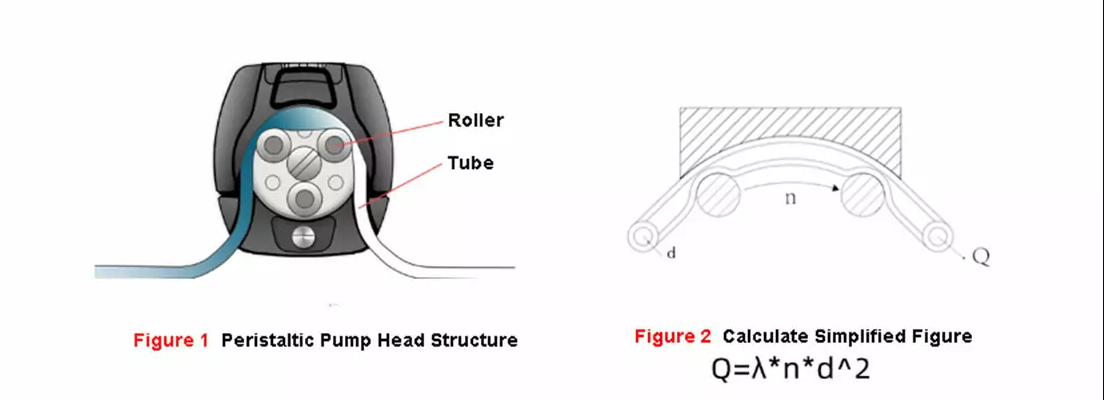
2. What parameters affect the peristaltic pump flow rate?
In addition to the above-mentioned pump head, pump tube and rotational speed that will affect the flow rate of the peristaltic pump, there are other factors that will also affect the flow rate of the peristaltic pump, including the following aspects:
1) Liquid viscosity: The viscosity of the transmitted liquid has a negative correlation with the flow rate of the peristaltic pump. The higher the viscosity, the smaller the corresponding flow rate.
2) Liquid specific gravity: The specific gravity of the transmitted liquid has a negative correlation with the flow rate of the peristaltic pump. The greater the specific gravity, the smaller the corresponding flow rate.
3) Suction lift and lift: The suction lift refers to the vertical height from the horizontal position of the liquid level to the peristaltic pump head, and the lift refers to the vertical height from the peristaltic pump head to the liquid outlet. The higher the suction lift, the smaller the flow rate; the lift has relatively little impact, but if the rated pressure and limit lift of the peristaltic pump are exceeded, the pump tube will expand and the wall thickness of the pump tube will become thinner, and the peristaltic pump will flow back.
4) Liquid temperature: Generally speaking, the higher the temperature, the viscosity of the liquid will decrease, and accordingly the fluidity will become better, so the flow rate of the peristaltic pump will become higher.
3. Reasons for errors in peristaltic pump flow rate
Ideally, a peristaltic pump produces the same flow rate per revolution, and the flow rate can be calculated based on the rotational speed. But in reality, there will still be some differences.
The peristaltic pump sucks in liquid based on the rebound of the liquid sucked into the pump tube, but the rebound takes a certain amount of time. If a relatively viscous liquid is transferred, more time will be needed. If the time required for rebound is greater than the distance displacement time of the pump head's single roller, the pump tube will be pressed again before it fully rebounds. In this case, the flow rate per revolution will be less than the theoretical value. In addition, the pressure at the outlet of the pump tube will also affect the flow rate, and the inner diameter of the pump tube will increase as the outlet pressure increases.
4. How we make the peristaltic pump flow rate more accurate?
After understanding some of the factors that affect the flow of a peristaltic pump and cause errors in the flow of a peristaltic pump, you can pay attention to the following aspects during use to minimize errors.
1) Pay attention to the suction lift and head, and try to shorten the suction lift during use.
2) For some viscous liquids, you can choose a more suitable pump tube and perform flow calibration according to the actual situation.
3) The flow accuracy of a small flow pump head and pump tube will be higher than that of a large flow pump head and pump tube. If the accuracy requirements are particularly high, a small flow pump head and pump tube can be considered.
4) In daily use, pay attention to maintenance, pay attention to the use condition of the pump tube, install it correctly and replace it in time.
5. Calculation and setting of flow rate of Chonry Precision Pump
For our company's peristaltic pumps, the corresponding flow rate can be calculated based on the flow calculation form. When the model of the peristaltic pump head and hose is selected, the rotation speed corresponding to the flow rate can be directly obtained. In addition, for smart flow and smart distribution peristaltic pumps, you can select the pump head, pump tube, and desired flow rate directly on the display. The below form shows a part of the pump head models flow rate. Chonry is the leading peristaltic pump manufacturer in China supplying full flow rate of peristaltic pumps of 0-33000ml/min. If you want the know more information on peristaltic pump flow rate. Please feel free to contact us at E-mail: [email protected]. WhatsApp: +86 15932139831
| Pump Head | Tube | ID*Wall Thickness(mm) | Speed(rpm) | Flow Rate (ml/min) |
| YZ1515x | 13# | 0.8*1.6 | 0-600 | 0-42 |
| 14# | 1.6*1.6 | 0-600 | 0-162 |
| 19# | 2.4*1.6 | 0-600 | 0-306 |
| 16# | 3.1*1.6 | 0-600 | 0-492 |
| 25# | 4.8*1.6 | 0-600 | 0-1020 |
| 17# | 6.4*1.6 | 0-600 | 0-1740 |
| 18# | 7.9*1.6 | 0-600 | 0-2280 |
| YZ1515x | 15# | 4.8*2.4 | 0-600 | 0-1020 |
| 24# | 6.4*2.4 | 0-600 | 0-1740 |
| YZ25L | 15# | 4.8*2.4 | 0-600 | 0-1800 |
| 24# | 6.4*2.4 | 0-600 | 0-3000 |
| 35# | 7.9*2.4 | 0-600 | 0-4200 |
| 36# | 9.6*2.4 | 0-600 | 0-6000 |
YZ35 YZ35-13L YZ35LS | 73# | 9.6*3.3 | 0-600 | 0-7400 |
| 82# | 12.7*3.3 | 0-600 | 0-12000 |
Related Products
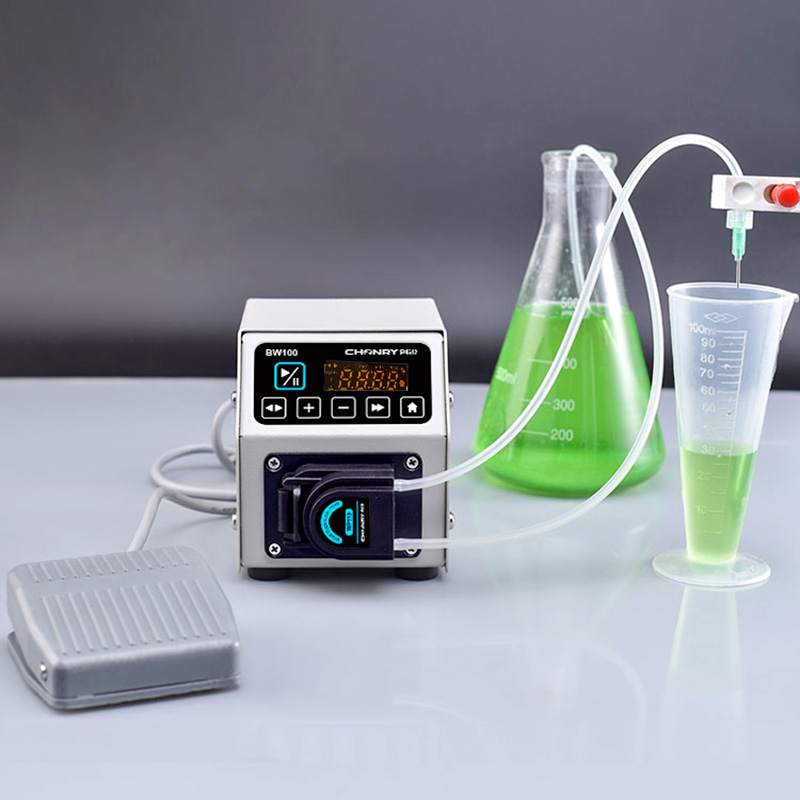
| 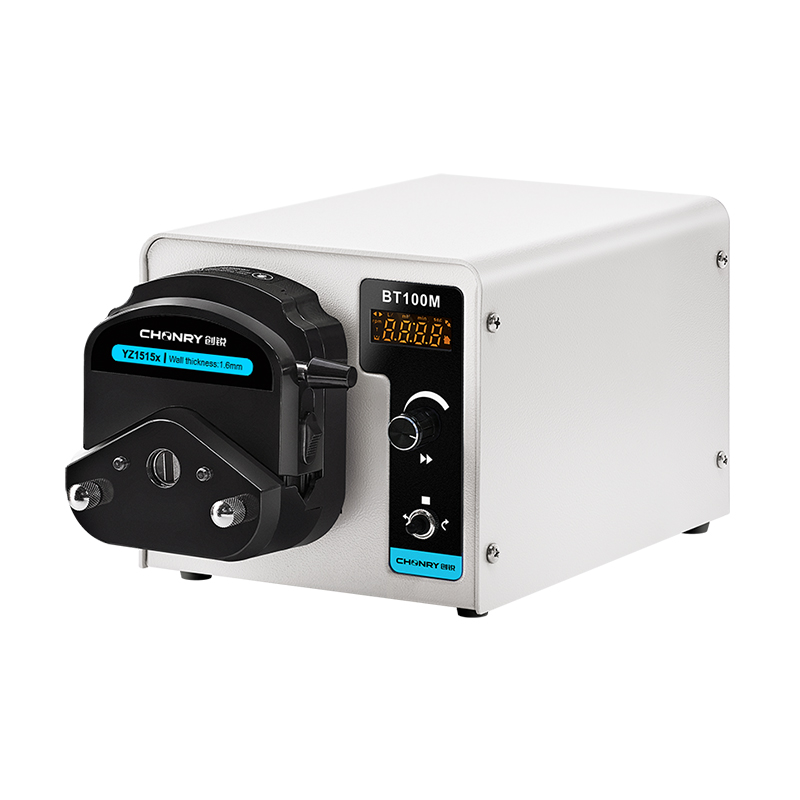
| 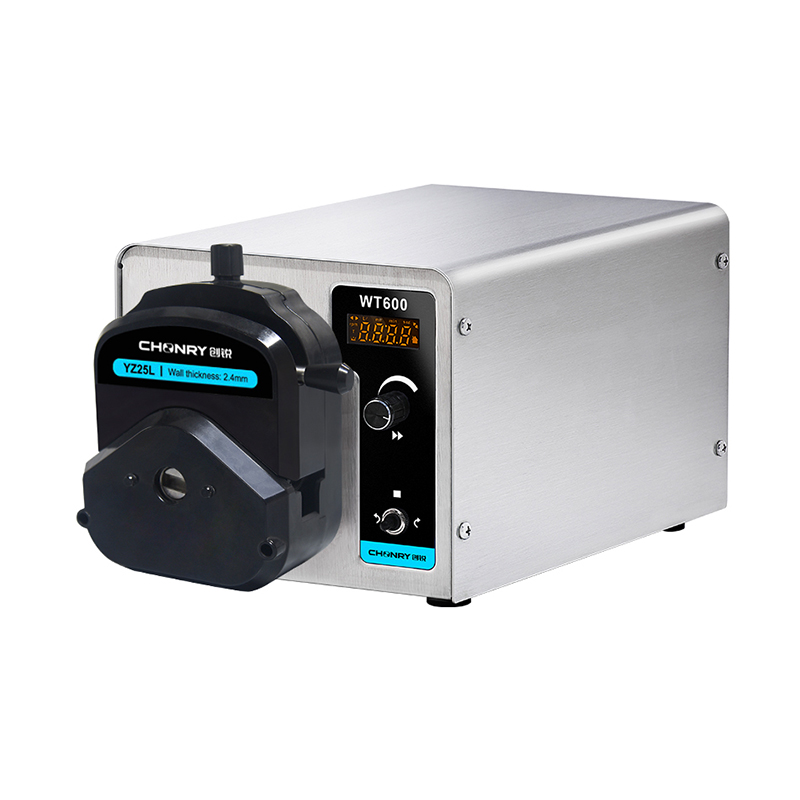
| 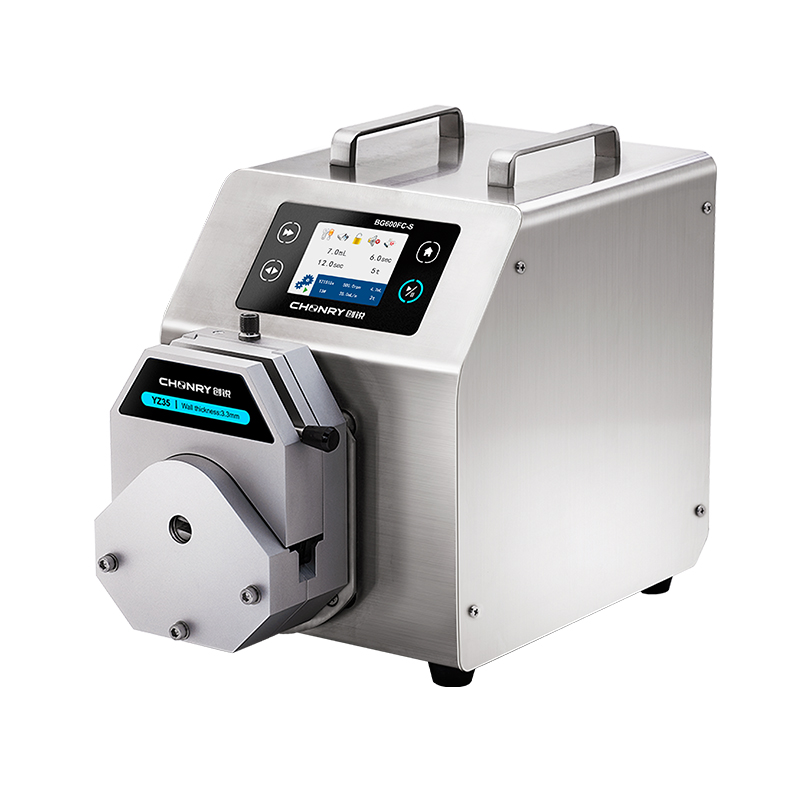
|
Model: BW100 Lab Peristaltic Pump Microfluid Pump Flow Rate: 28ml/min Learn more |
Model: BT100M/YZ1515X Simple Peristaltic Pump Constant Flow Pump Flow Rate: 380ml/min Learn more |
Model: WT600/YZ25L DC Brushless Peristaltic Pump Flow Rate: 6000ml/min Learn more |
Model: BG600FC-S/YZ35 High Flow Peristaltic Pump Flow Rate: 12000ml/min Learn more |

















